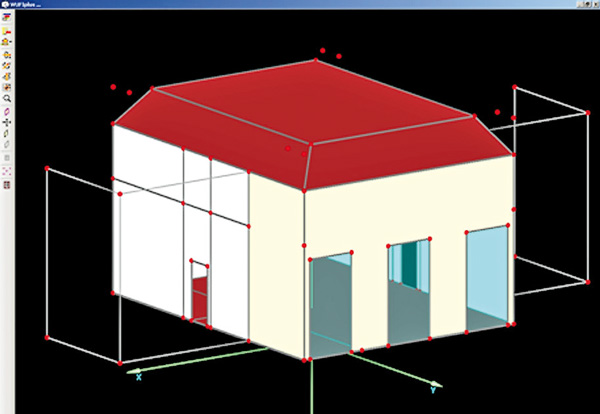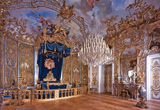On behalf of the Bavarian Palace Department, the Fraunhofer Institute for Building Physics IBP has, among other things, investigated the effects of climate and visitors on the indoor climate of Linderhof Palace and the Royal House at Schachen and has jointly developed new approaches to solutions.
The indoor climate is key to preservation because works of art can be destroyed step by step as a result of excessive daily fluctuations in relative humidity. To condition the air in historical rooms, special concepts are required. Whereas in the 20th century, when energy resources were used intensively, historical buildings were partly equipped with large air-conditioning systems. Today, cost-effective, decentralized or even passive solutions are conceived, which also mean that the valuable building substance is not disturbed as much as before. To develop such air-conditioning concepts, however, the climatic behavior of the historical rooms and their valuable, and to some extent still original, furnishings, must be precisely understood.
Building physics offers conservation science numerous new options. In recent decades, fundamental knowledge has been gained about the transport of heat and moisture in materials. This can now be used to study historical materials and rooms. Via hygrothermal building simulation, climatic conditions in building components as well as in entire buildings can be assessed and predicted. This enables the impact of measures affecting the indoor climate and changes to building components or structures to be assessed in advance.
With around 450,000 visitors per year, Schloss Linderhof is one of the most popular palaces in Bavaria. As part of a research project entitled “Climatic stability of historical buildings”, detailed investigations were conducted on the structure of the building, its usage, ventilation and room climate.
The aim of the project was to make a risk assessment of the works of art and furnishings in the palace and to develop a climate concept based on this. To start with, parts of the building were simulated using the example of the State Bedroom. In order to better understand the palace and its indoor climate, the principle general conditions of the building structure, use by visitors and ventilation were first analyzed. Averaged out over a year, the relative humidity in the palace is over 70 percent and therefore relatively high, while in living areas it is usually around 50 percent. Combined with high temperatures in summer, this leads to oppressive conditions, which sometimes make visitors feel somewhat uncomfortable. To ventilate the palace adequately, up till now windows and doors have been opened in summer, which in turn poses a risk for the valuable furnishings. The next step was to implement a simulation model based on the data obtained. This was compared with the measured indoor climate data and further investigations were carried out to assess the impact of visitors and air exchange.
Following extensive scientific research, a multi-stage ventilation concept is now being developed that involves new approaches to preventive conservation. The knowledge gained in the course of the research project has shown that as far as Linderhof Palace is concerned, it is not advisable to have an absolutely constant climate all year round. In any case, this could only be achieved with major technical efforts. When it comes to air-conditioning rooms today, resource-saving measures and simple decentralized solutions such as humidity-controlled temperature control, dehumidification or mechanical ventilation are increasingly being used.

